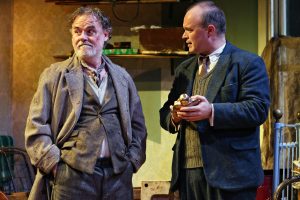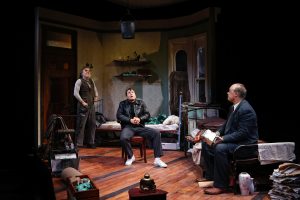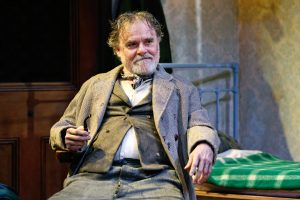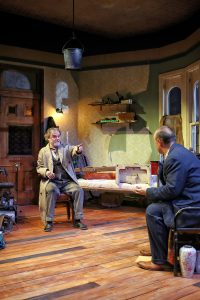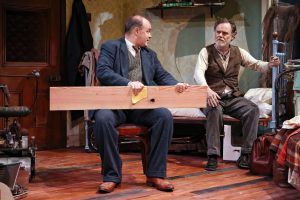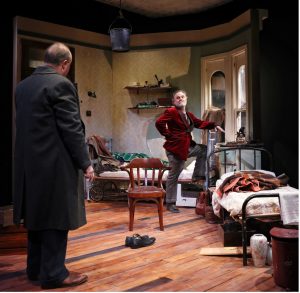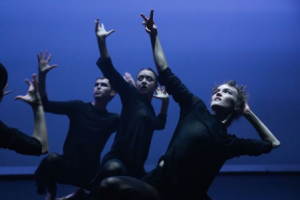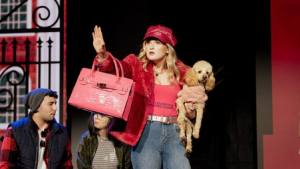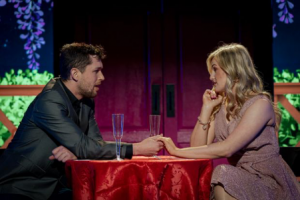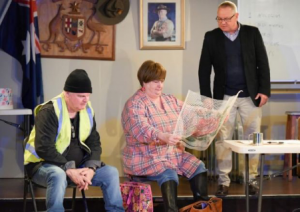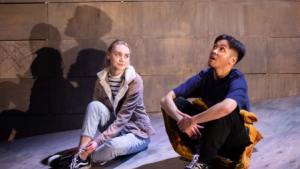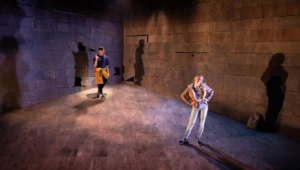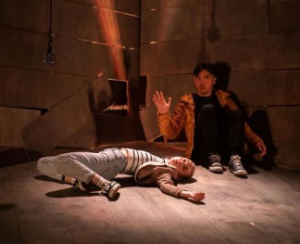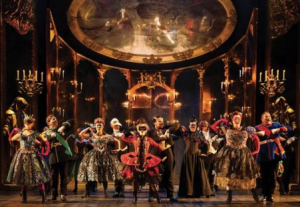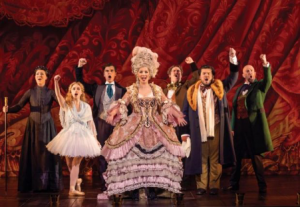By Hung-Yen Yang. National Theatre of Parramatta. Director Dom Mercer. Riverside Theatre. 20 – 29 October, 2022
Reviewed : 20 October, 2022*
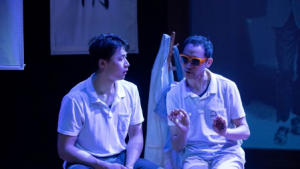
A Practical Guide to Self Defence is another piece of theatre that realises National Theatre of Parramatta’s aim to produce work that “reflects the diversity of Australia today through contemporary and bold performances”. The play does all of that. It’s autobiographical and reflects the experience of many kids growing up in Australia’s multicultural society. It’s very contemporary, and it’s certainly bold. How often do you see martial arts in Sydney theatres? It’s also very funny!
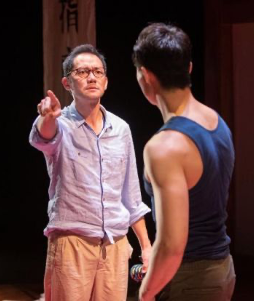
Here’s the plot! A first-generation Australian Chinese boy is growing up in Wollongong. He’s bullied by the white kids in his class; cancelled by the racist teacher on playground duty; blamed when he uses his limited martial arts training to fight back; misunderstood by his parents when he tells his story. Then, when his mother takes him to Hong Kong for a “surprise” in the summer holidays, she enrols him at a local school to learn Cantonese! Because he only speaks English he’s bullied by the “big boy gang” who demand his money. When he fights back, he’s expelled! So, he runs away and flies back to Sydney determined to work harder at school and get to university! Which he does … and you guessed it, he’s bullied yet again! And you can imagine what happens when he applies for jobs …
Here’s the sub plot! There are only two actors. They play the father, the son, the mother, the grandmother, the young bullies, the teacher, the university bullies, the school principal in Hong Kong, the Hong Kong bullies. They also show family photos and lots of advice on power point messages! And demonstrate various martial arts!
They are on the ball every minute. Quick costume bits and pieces – a pair of glasses, caps, shirts – are donned and discarded as they move from one anecdote to another, one character to another. There is no time to re-think! And they never miss a cue, verbal or physical, in this 75-minute long ingeniously written ‘Australian’ story.

Playwright Hung-Yen Yang must have been thrilled as he watched this perceptively directed and performed interpretation of his play. Dom Mercer’s direction ensured the warmth and humour of Yang’s writing did not overshadow the hurt and frustration the young Hung-Yen faced, nor the lasting effect it had on his life. Those messages were clear – and compelling. Compelling too were the underlying messages about family and values and heredity. All are interlinked in a very carefully crafted piece of theatre.
Edric Hong and Alan Zhu play the Older and Younger Yen. Both have a strong command of the many characters they portray– and of the stage itself.
Hong moves smoothly, clearly and with consummate ease from proud but strict, traditional father to wise, elderly grandmother, to red-bespectacled whining mother, to nasty teacher, to cruel bully. A change of stance, a change of voice, a different tilt of the head and one of his new characters emerges, strong and equally believable – and just as quickly changes back to his predominant character as the older Yen. This is not easy, especially when interspersed with examples of martial arts that require sustained control and energy. Hong’s timing and pace infuse his characters – and add to the humour that the real Yen has used to offset the racism that he has faced all his life.
Alan Zhu is an exceptional young actor. His energy and confidence imbue the characters he creates, whether it be the wide-eyed, innocent five-year-old Yen, the Year 7 student losing his belief that the bullying will stop in high school, or the unyielding Hong Kong principal.
Zhu has excellent comic timing and the ability to establish a strong relationship with the audience.

Together Zhu and Hong are a formidable pair with whom Mercer has worked to bring Hung-Yen Yang’s family – and bullying foes – beguilingly to life.
Behind the scenes Mercer has a band of imaginative creatives: set designer Kelsey Lee, composer and sound designer Zac Saric, Lighting and Video designer Morgan Moroney and fight choreographer Andy Trieu. They provide the setting and mood, the space and time in which the action – and the fight scenes – occur and are thus an intricate part of a production such as this.
Mercer acknowledges this in his program notes: “This play was unlike anything anyone on the creative team had ever read, filled to the brim with stage directions of virtuosic and sprawling fight sequences and striking visual effects, and we hope that our collective imaginations have managed to capture and provide some insight into the vivid and electric mind of the writing/writer”.
Together with the two talented, fit and fleet-footed actors they certainly have! In their hands Yang’s story is charmingly but very powerfully told.
It runs for only 9 days. Try not to miss it – and take your kids! They’ll love the fighting, they’ll laugh at the characterisations – and they’ll understand the messages.
First published in Stage Whispers magazine
*Opening performance
